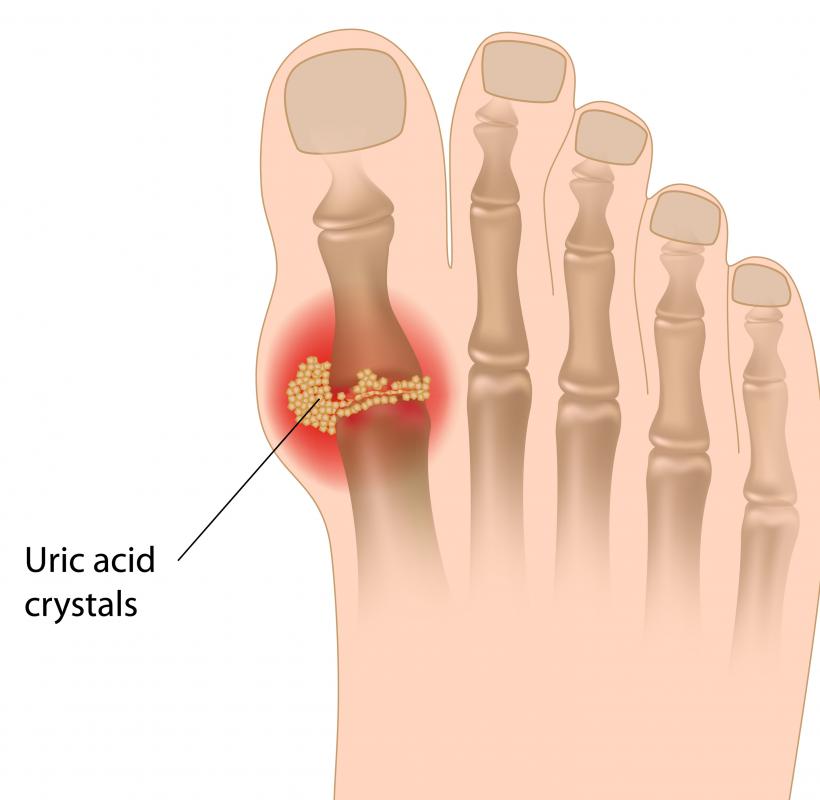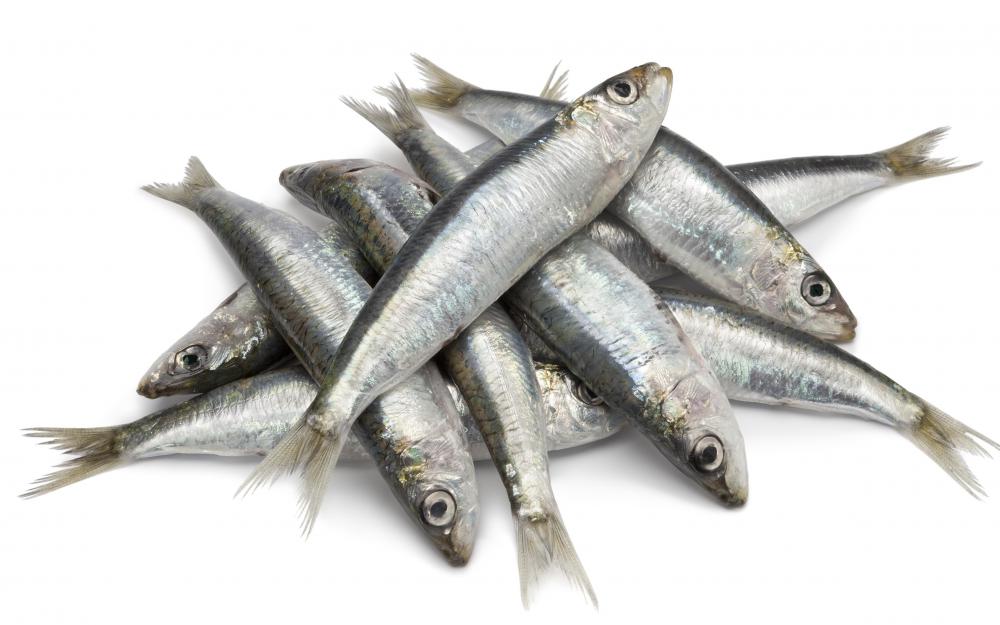At WiseGEEK, we're committed to delivering accurate, trustworthy information. Our expert-authored content is rigorously fact-checked and sourced from credible authorities. Discover how we uphold the highest standards in providing you with reliable knowledge.
What Is the Relationship between Fructose and Gout?
The relationship between fructose and gout is related to a research that showed women who drink high fructose-laden beverages are more likely to develop gout than those who don't. Sweetened soft drinks and juices were seen as culprits, though diet beverages were not implicated in the higher risk. Gout occurs as the result of the formation of uric acid crystals on and around the joints. The most common joint affected is the great toe, and gout is typically more common in men than it is in women. People who have high levels of uric acid in their blood or urine are also more likely to develop gout.
Gout is a form of arthritis, and symptoms of gout include excruciating, sudden pain, redness over the affected joint, and inflammation. Although gout typically affects only one joint at a time, multiple joints can be affected, and this is referred to as polyarticular gout. This type of gout can affect the feet, elbows, and ankles and is most often experienced on one side of the body, or unilaterally. Simple blood and urine tests can detect elevated levels of uric acid, and x-rays can evaluate joint and bone deformities.

The relationship between fructose and gout does not only exist with women, but with men as well. Consuming products high in fructose has also been implicated in the development of other conditions such as diabetes and obesity. If the relationship between fructose and gout does exist, the risk for developing the condition may still be low. Gout is not typically common in women, and other factors, independent of fructose consumption are likely to play a more important role.

In addition to the connection between fructose and gout, other factors are also linked to gout, including heavy drinking, eating large amounts of meat, and consuming a diet high in purine-rich foods. Foods containing purine include sardines, cauliflower, anchovies, and herring. Limiting these foods, or avoiding them altogether is one treatment of gout. Other treatments include medications such as colchicine, non-steroidal anti-inflammatory medications, and corticosteroids, which help ease inflammation.
Although fructose and gout has been implicated in causing gouty arthritis in adults, and in women in particular, it has not been shown to elevate the risk of juvenile arthritis in children, who routinely consume fruit juices high in fructose content. People who experience severe pain in the big toe, joint pain, redness over a joint, and inflammation should seek the medical evaluation from a health care professional.
AS FEATURED ON:
AS FEATURED ON:












Discuss this Article
Post your comments